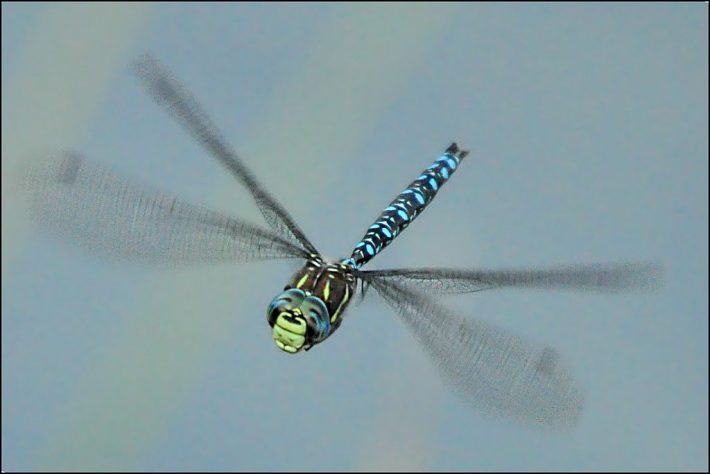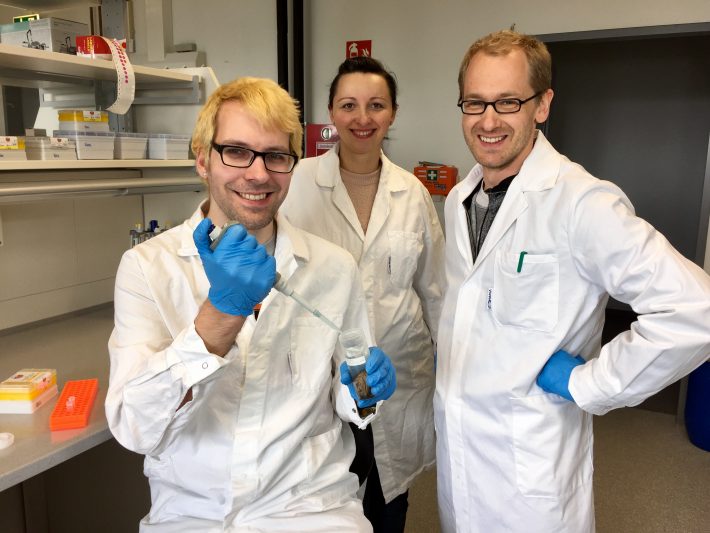Press Release: How Clean are Finnish Rivers?
University of Duisburg-Essen Press Release
Traditional stream assessment using visual identification of indicator species is time-consuming, expensive and procedures are seldom standardised. Especially small organisms may look similar and misidentifications happen frequently. Using a genetic method to identify the species these concerns are not an issue, as even small organisms can be securely identified using a DNA marker.

Dragonflies, mayflies and water beetles have one thing in common: They indicate how clean the streams are in which they live. Scientists from the University of Duisburg-Essen and the Finnish Environment Institute (SYKE) have developed a DNA-based method, which allows to assess the stream water quality with unprecedented speed and accuracy. The article – ‘Assessing strengths and weaknesses of DNA metabarcoding-based macroinvertebrate identification for routine stream monitoring‘ – was just released in the esteemed peer-reviewed journal Methods in Ecology and Evolution.
Traditional stream assessment using visual identification of indicator species is time-consuming, expensive and procedures are seldom standardised. Especially small organisms may look similar and misidentifications happen frequently. Using a genetic method to identify the species these concerns are not an issue, as even small organisms can be securely identified using a DNA marker.
Vasco Elbrecht from the University of Duisburg-Essen was involved in method development and is proud to see his research being applied in practice: “DNA-based assessment works like scanning a product barcode in the supermarket, the difference is, we are scanning the whole shopping chart at once”. Millions of DNA sequences can be read quickly and precisely using new high-throughput sequencing technology.

The viability of the developed method has now been tested on samples from 18 streams across Finland: The DNA-based assessment protocol detected twice the amount of species when compared to currently used routine biomonitoring method. The new method thus brings additional information about biodiversity, and will additionally improve over time as professor Florian Leese adds: “The required reference databases to assign the correct species to the detected DNA sequences are not complete yet.” Doctors Meissner and Aroviita point out that the application of more precise water quality assessment will improve sustainable management of streams and rivers. “In the near future such novel methods will not only improve assessments of ecological quality of Finnish freshwaters, but also other European future drinking water resources.”
This new study demonstrates in practice that the new DNA bases method is already viable for monitoring. Further, it generates more reproducible and precise taxa lists at equal costs to current methods. Since the beginning of 2017, Florian Leese is coordinating a Europe-wide initiative (DNAqua-net), bringing together scientists and stream manager from 43 countries to put this new method into practice.
There is also a video associated with this article detailing the sample processing and homogenisation for DNA extraction.
Read the full article (freely available for a limited time):
Elbrecht, V., Vamos, E. E., Meissner, K., Aroviita, J. and Leese, F. (2017), Assessing strengths and weaknesses of DNA metabarcoding-based macroinvertebrate identification for routine stream monitoring. Methods in Ecology and Evolution. doi:10.1111/2041-210X.12789
Academic Contacts:
Prof. Dr Florian Leese (Email: florian.leese[at]uni-due.de)
Vasco Elbrecht (Email: vasco.elbrecht[at]uni-due.de)
Dr. Kristian Meissner (Email: kristian.meissner[at]ymparisto.fi)
Jukka Aroviita (Email: jukka.aroviita[at]ymparisto.fi)
Like what we stand for?
Support our mission and help develop the next generation of ecologists by donating to the British Ecological Society.